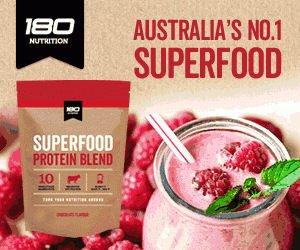For those of you who have been reading this blog for a long time will know of our struggles with our youngest in regards to his eating. Riley is notorious among our family and friends for his, frankly, infuriating stubbornness when it comes to vegetables and fruit. Yet, he’ll eat tomato paste out of the jar if we let him.
This said, I been able to see a smidgen of improvement: he tried corn recently, for example, and was surprised to admit he liked it.
I’ve been lucky in that this month I was able to turn to the Milo nutrition team to ask them some questions about this subject, because to me nutrition and health is strongly connected to play. Here’s what they answered and I hope it helps other parents out there who find themselves in a situation such as ours.
For parents of very, very picky eaters what are the top five or so vitamins or elements to their child’s diet to ensure they maintain their health?
Kids need a wide variety of foods to get all the nutrients they need to support healthy growth and development. There is no one nutrient or food that kids need more than others. It is all about trying to ensure they are getting something from each of the five food groups each day as the combination from each of these groups will provide all the nutrients required:
· Vegetable & fruit
· Bread, grains and cereals e.g Breakfast cereal, rice, pasta, bread
· Dairy e.g Milk, cheese, yoghurt
· Meat, chicken, fish, eggs or legumes (lentils, baked beans, chickepeas etc)
· Fats and oils
There are strategies (see below) of how you can help to get a fussy eater a wider variety of foods. But whilst you are working on this, to help ensure they are getting the right nutrients, when kids are ‘avoiding’ certain foods aim to offer and encourage alternatives within the relevant food group.
For example, if a kid does not eat meat, then try and get them to have eggs, chicken or even baked beans. If they will not eat a particular vegetable, aim for them to be including others. If they do not eat any vegetables, they may eat salad vegetables or fruit and this is perfectly acceptable. Generally nutrition is not a concern as alternatives can be found. If the child however is extremely restrictive in what they eat and avoiding whole food groups it is highly recommended to seek individualised advice from a health professional such as an accredited practicing dietitian (APD).
What words of advice – and consolation – can you offer to parents of picky eaters?
Picky eating is a normal development stage for children and it generally does not inhibit healthy development. There are many different reasons including finding appearance and smell off putting, natural suspiciousness of new things and most commonly their increasing ability to exercise independence or control.
So take consolation that it is normal and generally will pass, particularly if their close role models have healthy eating habits for them to emulate. If it has been an ongoing problem and you are concerned they are not growing well, consult a health professional for some individualised advice.
Top 10 Tips for Picky Eaters:
1) Persistence: Persist with offering a wide variety of healthy foods along with their favourites. It can take up to 10 neutral exposures for a child to accept a new food. Even if the meal is rejected, kids are being exposed to food that will form a part of their diet later on
2) Encourage adventure and taste: Get kids into the idea of tasting new foods and accept this may only be a small mouthful at first. Don’t force them to eat it all. Focus on the food rather than eating it such as its colour, shape, texture. Taste it together and show that you enjoy it too.
3) Make food fun and enticing: Introduce the idea of tasting new foods with a game. You could have a family challenge of all trying new foods each week and learning about them. Be creative with food such as making funny faces or animals or cutting or moulding into different shapes. If vegetables are an issue, try and offer in all sorts of ways such as with a cheese sauce, grated raw, in soup, mashed, steamed, stir fried and roasted
4) Get kids involved: Get them involved where-ever possible with food preparation, shopping or even growing a vegetable garden. They are more likely to eat when they themselves have been involved or chosen and they have been engaged positively around food.
5) Create a positive environment around food: Mealtimes should also be positive and enjoyable. It is important to sit as a family at the table for meals, remove distractions and focus on enjoying your meal.
6) Don’t make a fuss: Kids can be put off their food if eating becomes stressful. Remove the plate when they have finished without making a fuss if goes uneaten.
7) Use positive reinforcement: Praise them whenever they make an effort. Avoid bribery with sweet treats as this may glorify less healthy options.
8 ) Make sure they don’t fill up on junk food: Set up a good meal time routine, discouraging snacking too close to main meals as it can make it harder to want to eat anything.
9) Be a good role model: Kids take notice of what you do and often their habits will be influenced by what you do. Make sure you are ‘doing’ the behaviors you would like to see.
10) Get nutrition in other ways: Whilst it is still important to still offer foods to kids so they get exposure to help get some nutritious food into them, try and be clever by hiding foods in meals such as grated vegetables in rissoles, bolognaise, casseroles or lasagne, puree fruit into smoothies, fruit in yoghurt, or ground up nuts and seeds in breakfast cereal or baking. Try foods in different textures or forms such as frozen fruit ice-blocks.
Would you recommend a particular conversation or way of talking about food with your picky eater that doesn’t also make them feel defensive or confused?
The aim with dealing with picky eating is to ignore the ‘situation’, aim in everyday life to talk about food in a positive way and avoid using food in an emotional way. Steer away from having conversations directly about the foods they avoid and talk to both the pleasure and health that food provides. Try and weave this into everyday life and in doing so make it a fun learning experience.
On the pleasure side encourage them to get involved in cooking and support their creative flair in the kitchen. From a nutrition side, teach your children about ‘everyday’ and ‘sometimes’ foods. Ask them to tell you what they think is needed to make tonight’s dinner balanced and nutritious. Or let them pick out a couple of products at the supermarket and tell you whether it’s an everyday or sometimes food and why. You could even plant a vegetable patch as a family and read up on the goodness each of the vegetables you plant provides. Do some fun research together to find out more about food such as ‘why are apples red?’, ‘where does milk come from’. Create some fun food games at home. Also check out online fun interactive food games.
What are some of the best ways parents can model good eating patterns and behaviour?
A lot of what kids learn and do is influenced not by what you say, but by what you do, so it is important you ‘do as you say’. Getting your kids to have a positive healthy relationship with food means you need to also to be modelling good eating patterns and behaviour.
Aim to:
· Establish rules and routines with your kids to help establish key eating habits and be consistent.
· As parents to be united on the food front as well and agree about rules and routines around food.
· Set up regular and enjoyable mealtimes and eat together as a family. It is important to sit as a family at the table for meals, remove distractions and focus on enjoying your meal. Togetherness at mealtimes has been shown to be important for a child’s overall development.
· Eat your meal slowly and make it a positive family occasion rather than viewing as it as something to quickly get through so you can rush off and work (or play!). It takes up to 20 minutes for the brain to tell the body that it has been fed sufficiently.
· Avoid eating in front of the TV or any other distractions at the dinner table.
· Choose and eat healthy food choices and limiting the intake of non-core junk food. Model what to eat, when and how much and make sure you eat the foods that they avoid.
· Expose your kids to a variety of foods and display your enjoyment for the foods too by eating them.
· Promote adventure in food by showing your sense of eating adventure and your openness to ‘try anything’ – let them see the adventurous eater in you. You could have a ‘new menu item’ night during the week. Show your children that you try and experiment with different foods.
· Communicate early and often about food, eating, nutrients and health.
Can you recommend any good books on this subject?
More peas please: solutions for fussy eaters by Kate Di Prima & Julie Cichero.

This year, I’ve been an ambassador for the MILO Play Movement. The MILO team is very proud of and thankful for the support generated by parents and families around the importance of play. In the months ahead the MILO team will refocus the efforts of the Play Movement to get the message of the importance of play to a greater number of parents and families and ensure parents understand the nutritional benefits of MILO. As a result, the MILO ambassador program will end later this month, and I will no longer blog on behalf of the program.


















